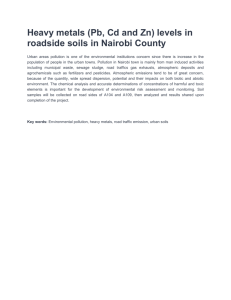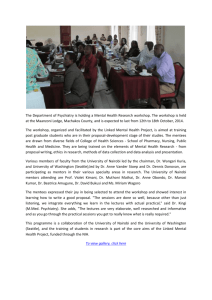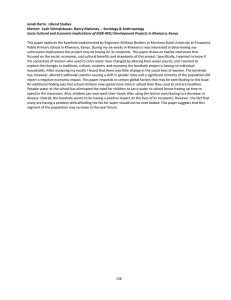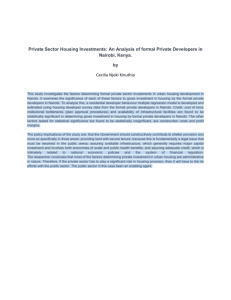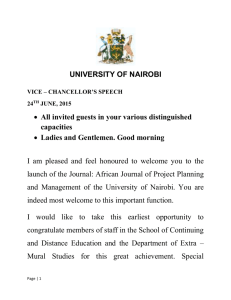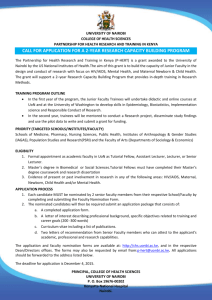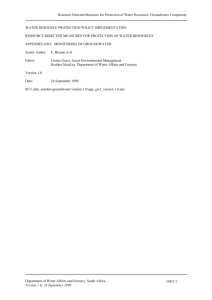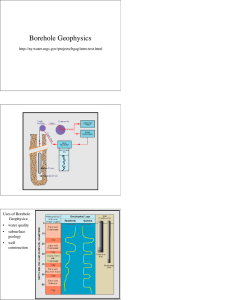POLLUTION OF GROUNDWATER IN URBAN AREAS OF KENYA
advertisement
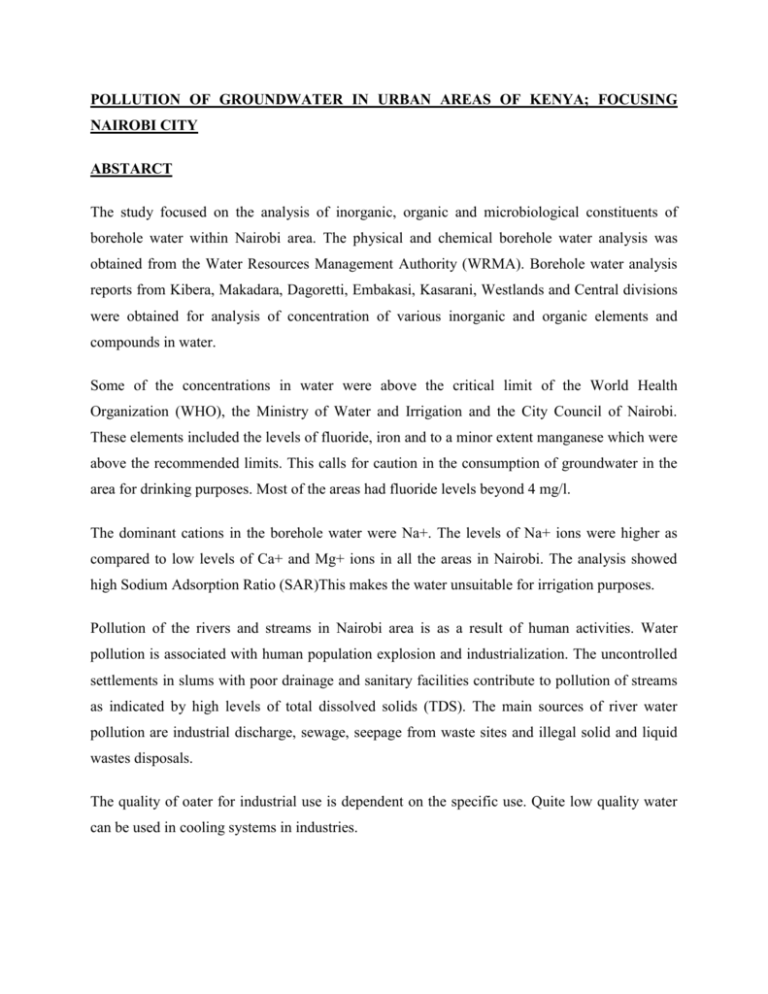
POLLUTION OF GROUNDWATER IN URBAN AREAS OF KENYA; FOCUSING NAIROBI CITY ABSTARCT The study focused on the analysis of inorganic, organic and microbiological constituents of borehole water within Nairobi area. The physical and chemical borehole water analysis was obtained from the Water Resources Management Authority (WRMA). Borehole water analysis reports from Kibera, Makadara, Dagoretti, Embakasi, Kasarani, Westlands and Central divisions were obtained for analysis of concentration of various inorganic and organic elements and compounds in water. Some of the concentrations in water were above the critical limit of the World Health Organization (WHO), the Ministry of Water and Irrigation and the City Council of Nairobi. These elements included the levels of fluoride, iron and to a minor extent manganese which were above the recommended limits. This calls for caution in the consumption of groundwater in the area for drinking purposes. Most of the areas had fluoride levels beyond 4 mg/l. The dominant cations in the borehole water were Na+. The levels of Na+ ions were higher as compared to low levels of Ca+ and Mg+ ions in all the areas in Nairobi. The analysis showed high Sodium Adsorption Ratio (SAR)This makes the water unsuitable for irrigation purposes. Pollution of the rivers and streams in Nairobi area is as a result of human activities. Water pollution is associated with human population explosion and industrialization. The uncontrolled settlements in slums with poor drainage and sanitary facilities contribute to pollution of streams as indicated by high levels of total dissolved solids (TDS). The main sources of river water pollution are industrial discharge, sewage, seepage from waste sites and illegal solid and liquid wastes disposals. The quality of oater for industrial use is dependent on the specific use. Quite low quality water can be used in cooling systems in industries.
